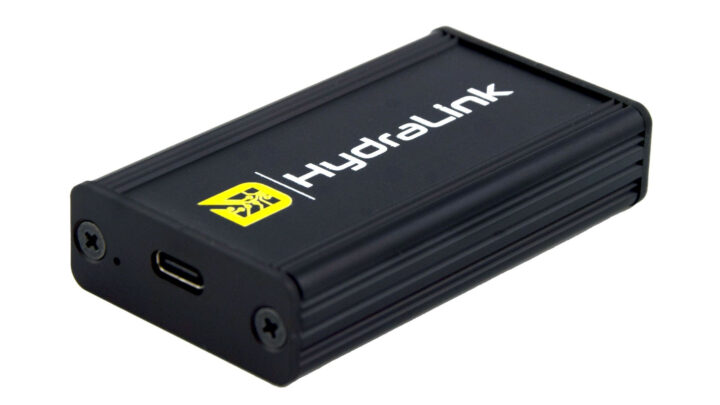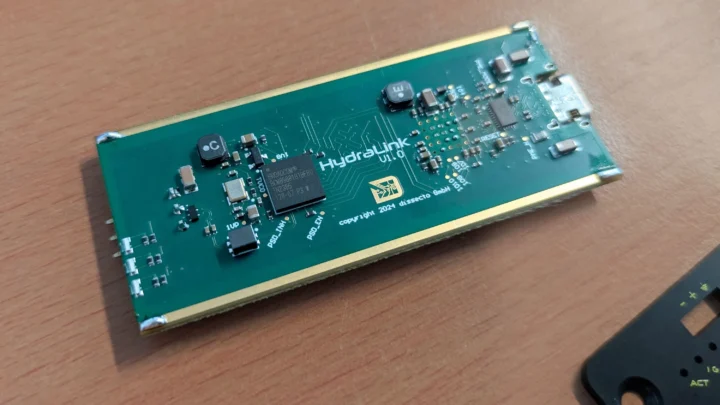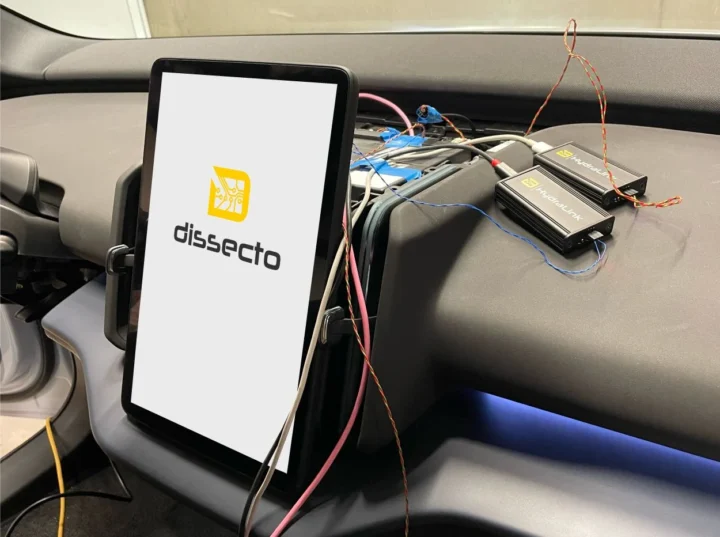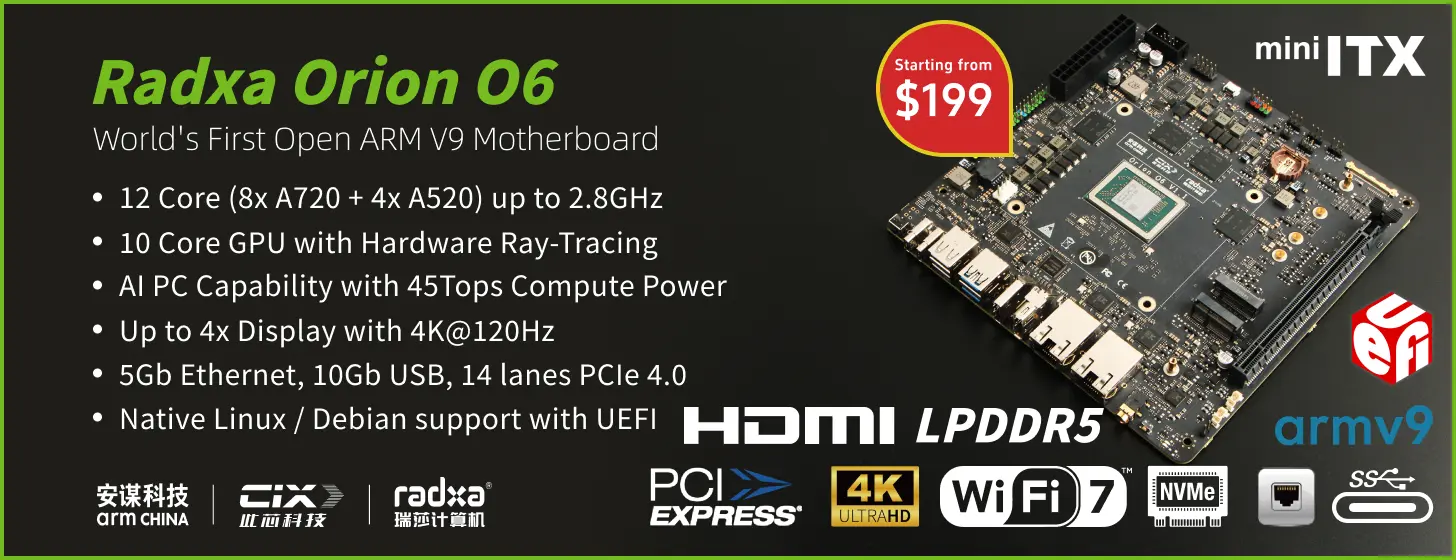HydraLink is a compact USB-to-Automotive Ethernet dongle that supports 100BASE-T1 and 1000BASE-T1 standards over a single twisted pair (no large RJ45 connector needed) and provides a solution for diagnosing, testing, and prototyping automotive networks.
The rationale behind HydraLink is that the automotive sector is undergoing a shift from CAN-based systems to advanced Automotive Ethernet networks like BroadR-Reach (802.3bw) that allow multiple in-vehicle systems to simultaneously access information over unshielded single twisted pair cables. So as I understand it, the HydraLink is the modern equivalent of OBD-II USB scanners relying on Ethernet instead.
HydraLink specifications:
- Networking – 100 Mbps or 1000 Mbps automotive Ethernet via 2.54 mm pin header (Note: the board below features a Broadcom BCM89811 BroadR-Reach automotive Ethernet RGMII transceiver limited to 100BASE-T1 data rate)
- USB – USB 3.0 Gen 1 Type-C port
- Misc – Link activity and link speed LED indicators
- Power Supply – 5V via USB interface (no external power needed)
- Dimensions – 74 x 41 x 16 mm
- Weight – 55 grams
- Temperature Range – 0°C to +70°C
The HydraLink is fully compatible with macOS, Linux, and Windows, thanks to open-source drivers, and is viewed as a USB Ethernet device by the host. Hardware files like schematics and a bill of materials will be released later, but the code can already be found on dissecto’s GitHub account in two repositories:
- hydralink – Python CLI & Quick Start Guide with install instructions, usage examples for bitrate/mode switching, and scripting patterns.
- hydralink-kernel-module- Kernel module source with driver integration, build instructions, and API reference for raw socket access.
Users can make use of standard tools such as Scapy, Wireshark, bridgeutils, iptables, tcpdump, ethtool, and more to capture packets and configure the device. It’s also possible to pair two HydraLinks (one in master mode and the other in slave mode) to create a transparent Layer2 bridge that forwards 100BASET1 or 1000BASET1 frames at wire speed. Note that the open-source nature of the solution will be somewhat limited because the chips require NDAs.
The HydraLink USB 3.0 to automotive Ethernet dongle will be especially useful to automotive engineers, security researchers, car hackers, tuners, and makers in the automotive field. Note that Automotive Ethernet became more common in vehicles produced after 2016, and while most cars will feature an OBD-II (CAN Bus) interface by default, you’d have to check out if yours support single pair Ethernet (SPE).
Dissecto has just launched the HydraLink on Crowd Supply with a $10,000 funding goal. A $329 pledge is asked for the HydraLink, but shipping adds $8 to the US, and $18 to the rest of the world. Deliveries are scheduled by the end of October 2025. It’s not the first USB to automotive Ethernet adapter on the market, but none are open source, and models in the same price range, such as FibreCode FC602 or MACH Systems 100Base-T1 USB Interface, are limited to USB 2.0 and 100 Mbs Ethernet speeds. The more advanced TOSUN TE1051 is sold for $870 on Amazon.

Jean-Luc started CNX Software in 2010 as a part-time endeavor, before quitting his job as a software engineering manager, and starting to write daily news, and reviews full time later in 2011.
Support CNX Software! Donate via cryptocurrencies, become a Patron on Patreon, or purchase goods on Amazon or Aliexpress








